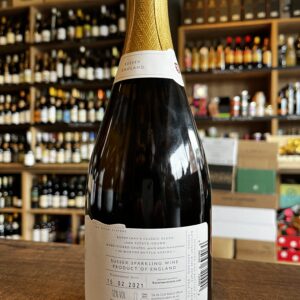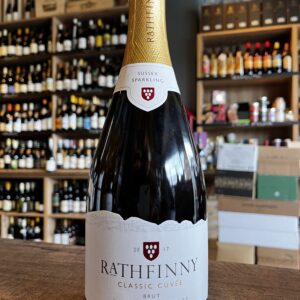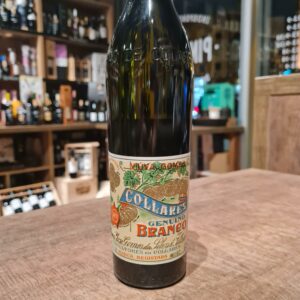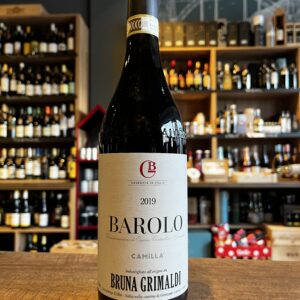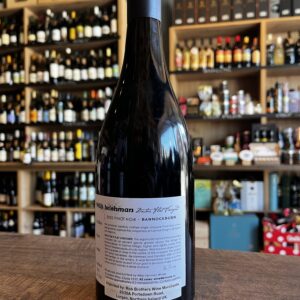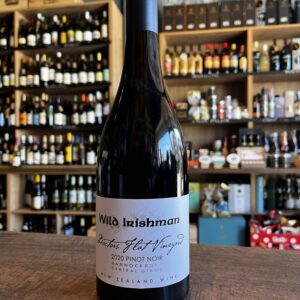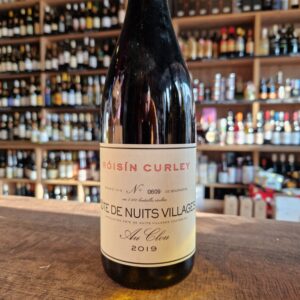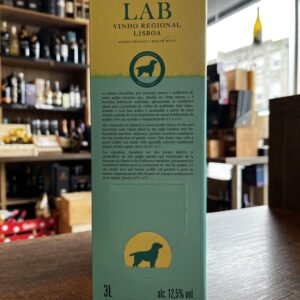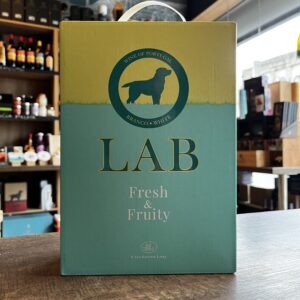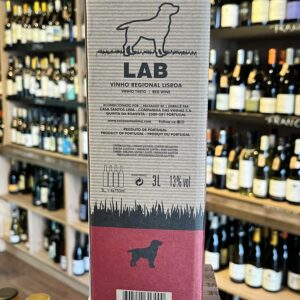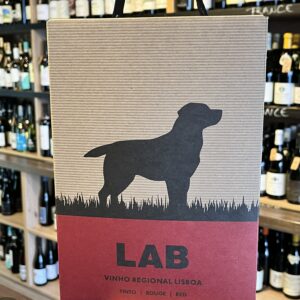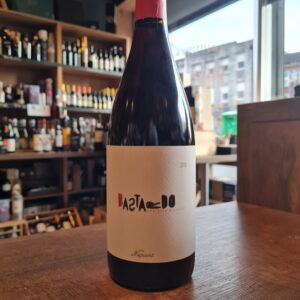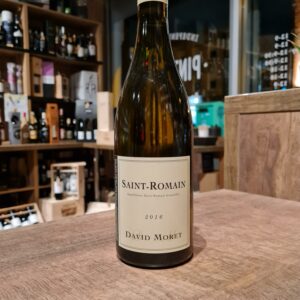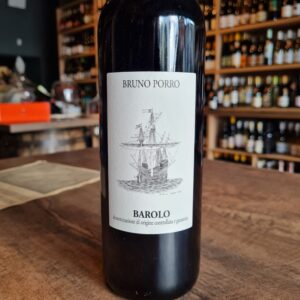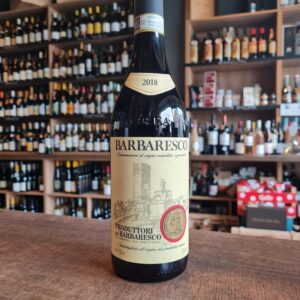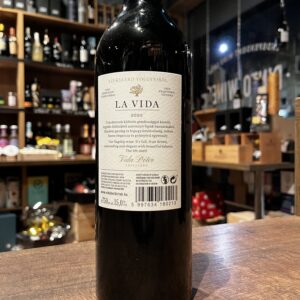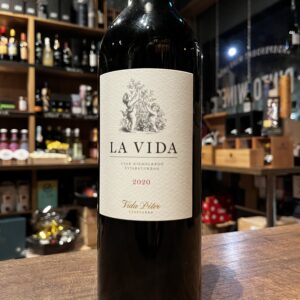-
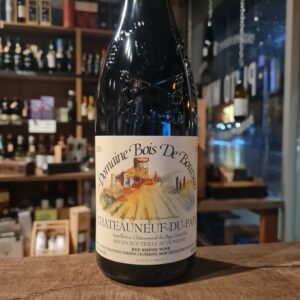 Domaine Bois de Boursan makes exemplary Châteauneuf-du-Pape in the Southern Rhône. This family-run estate was started by the Versino family in 1955, who moved across from Piedmont in Italy. It is now in the hands of Jean-Paul, the third generation at the helm. He takes great pride in continuing to make traditionally-styled reds with the belief that vinifying with stems and ageing the wine for extended periods in large oak foudres gives his wine its unique character. There is nothing flashy or opulent here, just wines with great character. In total, Jean-Paul has 10 hectares spread across 27 different parcels in Châteauneuf-du-Pape, with its changing soil types and vines up to 50 years old.
Domaine Bois de Boursan makes exemplary Châteauneuf-du-Pape in the Southern Rhône. This family-run estate was started by the Versino family in 1955, who moved across from Piedmont in Italy. It is now in the hands of Jean-Paul, the third generation at the helm. He takes great pride in continuing to make traditionally-styled reds with the belief that vinifying with stems and ageing the wine for extended periods in large oak foudres gives his wine its unique character. There is nothing flashy or opulent here, just wines with great character. In total, Jean-Paul has 10 hectares spread across 27 different parcels in Châteauneuf-du-Pape, with its changing soil types and vines up to 50 years old. -
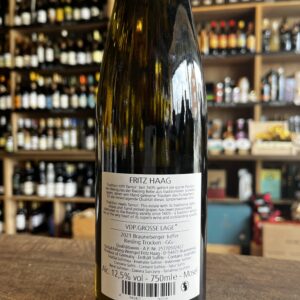
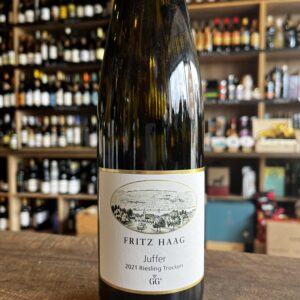 The historic Fritz Haag wine estate is located in the heart of the central Mosel River Valley. The earliest documentation of the estate dates back to 1605. At that time, the village in which it is situated was known as “Dusemond.” In 1925, this village was renamed “Brauneberg” (“brown mountain,” a reference to the color of the slate soil in this area of the Mosel) in an endeavor to further promote the reputation of its world-renowned vineyards “Brauneberger Juffer” and “Brauneberger Juffer Sonnenuhr.” Like all the top Mosel producers, Fritz Haag produces a range of wines including some very rich, late harvest dessert wines. These wines put the region on the map for luxury wine in the 17 and 1800s, making some Mosel Riesling more pricey and coveted than first growth Bordeaux. But in truth the wines that the locals drank, especially in the summer, were generally off dry to completely bone dry. Fritz Haag's vineyards sit along the slopes of the Brauneberger hill and the vineyards of Juffer and Juffer Sonnenuhr. Brauneberger faces almost entirely south which makes it a bit easier to get fully ripe Riesling in the classically cold, wet Mosel. That has changed a bit recently of course, but this is still a prized site for wines that perfectly balance finesse and power, complexity and airy drinkability. This specific wine is a VDP GG or Grosse Lage which is equivalent to a Grand Cru.
The historic Fritz Haag wine estate is located in the heart of the central Mosel River Valley. The earliest documentation of the estate dates back to 1605. At that time, the village in which it is situated was known as “Dusemond.” In 1925, this village was renamed “Brauneberg” (“brown mountain,” a reference to the color of the slate soil in this area of the Mosel) in an endeavor to further promote the reputation of its world-renowned vineyards “Brauneberger Juffer” and “Brauneberger Juffer Sonnenuhr.” Like all the top Mosel producers, Fritz Haag produces a range of wines including some very rich, late harvest dessert wines. These wines put the region on the map for luxury wine in the 17 and 1800s, making some Mosel Riesling more pricey and coveted than first growth Bordeaux. But in truth the wines that the locals drank, especially in the summer, were generally off dry to completely bone dry. Fritz Haag's vineyards sit along the slopes of the Brauneberger hill and the vineyards of Juffer and Juffer Sonnenuhr. Brauneberger faces almost entirely south which makes it a bit easier to get fully ripe Riesling in the classically cold, wet Mosel. That has changed a bit recently of course, but this is still a prized site for wines that perfectly balance finesse and power, complexity and airy drinkability. This specific wine is a VDP GG or Grosse Lage which is equivalent to a Grand Cru. -
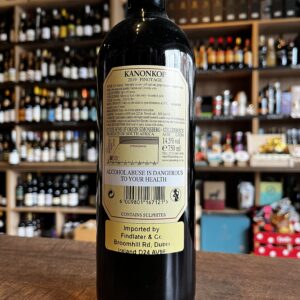
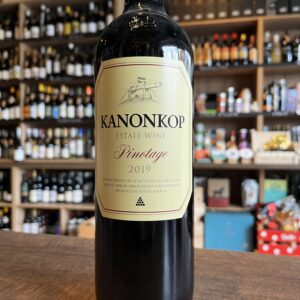 The name Kanonkop is derived from a hillock (kop) on the Simonsberg mountain above the wine estate from where, during the 17th and 18th centuries, a cannon (kanon) was fired to announce the arrival of sailing ships entering Table Bay. The roar of the cannon would be the signal to local farmers, who were waiting to make the 50-kilometer journey to the harbour, to load up their wagons with fresh fruit and vegetables to barter their produce. The first wines bearing the Kanonkop label were produced in 1973. To wine lovers familiar with the centuries old châteaux and domaines of Bordeaux and Burgundy respectively, the winemaking history of our estate may seem surprisingly young. For 1973 was the year in which Kanonkop’s contention for a place in the annals of South African wine greatness began, just three years before the death of the man to whom the wine estate owes everything it has achieved and all the recognition it has attained: Paul Sauer.
The name Kanonkop is derived from a hillock (kop) on the Simonsberg mountain above the wine estate from where, during the 17th and 18th centuries, a cannon (kanon) was fired to announce the arrival of sailing ships entering Table Bay. The roar of the cannon would be the signal to local farmers, who were waiting to make the 50-kilometer journey to the harbour, to load up their wagons with fresh fruit and vegetables to barter their produce. The first wines bearing the Kanonkop label were produced in 1973. To wine lovers familiar with the centuries old châteaux and domaines of Bordeaux and Burgundy respectively, the winemaking history of our estate may seem surprisingly young. For 1973 was the year in which Kanonkop’s contention for a place in the annals of South African wine greatness began, just three years before the death of the man to whom the wine estate owes everything it has achieved and all the recognition it has attained: Paul Sauer. -
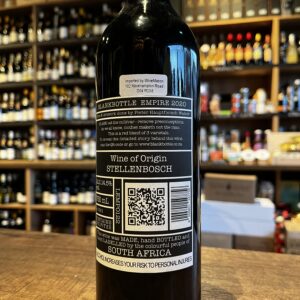
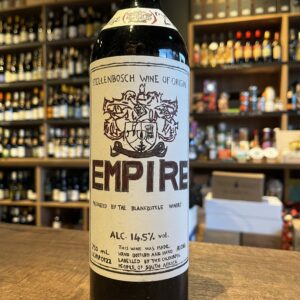 The story of this wine told by Peter Hauptfleisch himself-''Today I'm standing up to defend the EMPIRE - STELLENBOSCH. Silently, she’s been re-aligning her troops and now strikes back at the Swartland to establish herself yet again as a formidable force. Just for the record - I am a huge fan of Swartland white blends. The image of South African wines has changed dramatically over the past 10 years and the Swartland played a huge part in this. Their wines, especially the Rhône-style white blends are top notch. They are fun, young, energetic and unique and started to gain international fame. Stellenbosch, however (where I studied winemaking), is the original EMPIRE of South African wine. Like most of us, I like to support the underdog, and in the case of white blends, the Empire became exactly that. So I created a white blend based on similar varieties - a combination that could give some of the Swartland white blends a go. The empire is therefore now striking back at the Swartland with a blend of an all-Stellenbosch Verdelho, Pinot blanc, Sauvignon blanc, Roussanne, Marsanne, Chardonnay, Chenin blanc and Viognier. The label consists of two sections. On the left part of the label you will see a half star, which was the logo for the "Swartland Revolution". And on the right - stripes that represent a traditional and conservative EMPIRE. And the red brother of Empire Strikes Back is EMPIRE - not striking back but just being himself. With Cabernet Sauvignon as driver and bits of Merlot and Cabernet franc to compliment. The old style design label shows a combination crest. I combined the crest of Stellenbosch University and Elsenburg College - The 2 Empires when it comes to wine education - I studied at both...'' In another words this red was created to strike back at the popularity of the whites and with its quality to balance the market. I dont it was needed as the reds quality is a great as the counterparts.
The story of this wine told by Peter Hauptfleisch himself-''Today I'm standing up to defend the EMPIRE - STELLENBOSCH. Silently, she’s been re-aligning her troops and now strikes back at the Swartland to establish herself yet again as a formidable force. Just for the record - I am a huge fan of Swartland white blends. The image of South African wines has changed dramatically over the past 10 years and the Swartland played a huge part in this. Their wines, especially the Rhône-style white blends are top notch. They are fun, young, energetic and unique and started to gain international fame. Stellenbosch, however (where I studied winemaking), is the original EMPIRE of South African wine. Like most of us, I like to support the underdog, and in the case of white blends, the Empire became exactly that. So I created a white blend based on similar varieties - a combination that could give some of the Swartland white blends a go. The empire is therefore now striking back at the Swartland with a blend of an all-Stellenbosch Verdelho, Pinot blanc, Sauvignon blanc, Roussanne, Marsanne, Chardonnay, Chenin blanc and Viognier. The label consists of two sections. On the left part of the label you will see a half star, which was the logo for the "Swartland Revolution". And on the right - stripes that represent a traditional and conservative EMPIRE. And the red brother of Empire Strikes Back is EMPIRE - not striking back but just being himself. With Cabernet Sauvignon as driver and bits of Merlot and Cabernet franc to compliment. The old style design label shows a combination crest. I combined the crest of Stellenbosch University and Elsenburg College - The 2 Empires when it comes to wine education - I studied at both...'' In another words this red was created to strike back at the popularity of the whites and with its quality to balance the market. I dont it was needed as the reds quality is a great as the counterparts. -
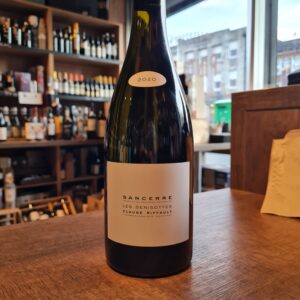 Stéphane Riffault (Claude’s son and now the owner of the estate) is turning out Sancerre bottlings that are the envy of many producers twice his age. As David Schildknecht put it, “Make no mistake: this address in the hamlet of Maison Salle (Sury-en-Vaux) is now one of the five or six most exciting estates in the Sancerre appellation.” Given that Stephane’s holdings represent 4-tenths of 1 percent of the appellation, he is clearly doing something right. Based in the village of Sury-en-Vaux, Stéphane Riffault works 33 different parcels in 8 different lieu-dits spread across four villages. The 13.5 hectares of vines are plowed, and no synthetic material is used. Starting in 2017, the property has been certified organic by ECOCERT and biodynamic by BIODYVIN. Unlike most Sancerre producers, the entire harvest is carried out by hand, and extensive sorting occurs before the grapes are crushed. Stéphane’s wife, Benedicte, leads the harvest team while Stéphane manages the sorting and press during harvest. Most of the domaine’s holdings are planted on the soft limestone soil called terres blanches, with some parcels on calliottes and silex. Minor, judicious uses of oak help to add length to the already precise, site-expressive, and vertical bottlings. All the parcels are vinified separately, and except for the rosé, all the wines are bottled unfiltered. Having studied and worked in Burgundy (and closely with Olivier Leflaive), it’s easy to see the Burgundian influence in Stéphane’s wines. The mastery of minerality standing shoulder–height with the wood is rarely duplicated in Sancerre. Regardless of his parcels’ exposition (many are south-facing), Riffault’s wines are always crisp and highcut with a jeweled delineation that speaks to the precision and attention these wines get. These are not your daddy’s (or his daddy, Claude’s) Sancerres. Sancerre Les Denisottes Les Denisottes comes from a lieu-dit located quite close to the domaine’s cellar. Here the terres blanches soils are deeper and more pebbly than rocky and producing a richer style of Sancerre – one that requires a longer élevage in barrel, and released with a greater capacity to age.
Stéphane Riffault (Claude’s son and now the owner of the estate) is turning out Sancerre bottlings that are the envy of many producers twice his age. As David Schildknecht put it, “Make no mistake: this address in the hamlet of Maison Salle (Sury-en-Vaux) is now one of the five or six most exciting estates in the Sancerre appellation.” Given that Stephane’s holdings represent 4-tenths of 1 percent of the appellation, he is clearly doing something right. Based in the village of Sury-en-Vaux, Stéphane Riffault works 33 different parcels in 8 different lieu-dits spread across four villages. The 13.5 hectares of vines are plowed, and no synthetic material is used. Starting in 2017, the property has been certified organic by ECOCERT and biodynamic by BIODYVIN. Unlike most Sancerre producers, the entire harvest is carried out by hand, and extensive sorting occurs before the grapes are crushed. Stéphane’s wife, Benedicte, leads the harvest team while Stéphane manages the sorting and press during harvest. Most of the domaine’s holdings are planted on the soft limestone soil called terres blanches, with some parcels on calliottes and silex. Minor, judicious uses of oak help to add length to the already precise, site-expressive, and vertical bottlings. All the parcels are vinified separately, and except for the rosé, all the wines are bottled unfiltered. Having studied and worked in Burgundy (and closely with Olivier Leflaive), it’s easy to see the Burgundian influence in Stéphane’s wines. The mastery of minerality standing shoulder–height with the wood is rarely duplicated in Sancerre. Regardless of his parcels’ exposition (many are south-facing), Riffault’s wines are always crisp and highcut with a jeweled delineation that speaks to the precision and attention these wines get. These are not your daddy’s (or his daddy, Claude’s) Sancerres. Sancerre Les Denisottes Les Denisottes comes from a lieu-dit located quite close to the domaine’s cellar. Here the terres blanches soils are deeper and more pebbly than rocky and producing a richer style of Sancerre – one that requires a longer élevage in barrel, and released with a greater capacity to age. -
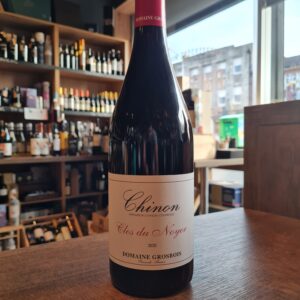 Located on the right bank of the Vienne Valley, between Tours and Saumur, Domaine Grosbois is an old fortified farm built in the 15th century which today covers 20 hectares of vines. Now run by two brothers, Nicolas and Sylvain, the family vineyards are located at a place called “The Pressoir” Panzoult in the Chinon appellation at the heart of the Loire Valley. The winemaking here is concentrated solely on the production of red wines made from the Cabernet Franc grape. Nicolas has been at the domaine since 2005 after returning from ten years working as a travelling winemaker, gaining experience in locations as diverse as the Minervois, Chile, Oregon (Adelsheim), Australia (Brokenwood) and New Zealand (Pegasus Bay). His first vintage was in 2006 where he worked alongside his father, Jacques (who had previously been more inclined to sell off the production in cubitainer). Jacques retired, or at least withdrew, in 2008 allowing Nicolas to develop the domaine in the way he intended to continue, converting to organic and biodynamic viticulture. The winemaking philosophy at Grosbois is centred around the idea of micro-site specificity with the various Cabernet Franc bottling's reflecting the 19 unique plots of vines on the Panzoult Hill, all of which had been strategically planted according to their geological characteristics. Once in the cellar, Nicolas lets the grapes speak for themselves, keeping a light hand at winemaking. He ferments in open concrete tanks with indigenous yeast, uses no oak and minimal filtration, so what you find in the final wine is a pure expression of a teeny parcel of Chinon. Pair it with roast duck with peppers. Serve after slight aeration
Located on the right bank of the Vienne Valley, between Tours and Saumur, Domaine Grosbois is an old fortified farm built in the 15th century which today covers 20 hectares of vines. Now run by two brothers, Nicolas and Sylvain, the family vineyards are located at a place called “The Pressoir” Panzoult in the Chinon appellation at the heart of the Loire Valley. The winemaking here is concentrated solely on the production of red wines made from the Cabernet Franc grape. Nicolas has been at the domaine since 2005 after returning from ten years working as a travelling winemaker, gaining experience in locations as diverse as the Minervois, Chile, Oregon (Adelsheim), Australia (Brokenwood) and New Zealand (Pegasus Bay). His first vintage was in 2006 where he worked alongside his father, Jacques (who had previously been more inclined to sell off the production in cubitainer). Jacques retired, or at least withdrew, in 2008 allowing Nicolas to develop the domaine in the way he intended to continue, converting to organic and biodynamic viticulture. The winemaking philosophy at Grosbois is centred around the idea of micro-site specificity with the various Cabernet Franc bottling's reflecting the 19 unique plots of vines on the Panzoult Hill, all of which had been strategically planted according to their geological characteristics. Once in the cellar, Nicolas lets the grapes speak for themselves, keeping a light hand at winemaking. He ferments in open concrete tanks with indigenous yeast, uses no oak and minimal filtration, so what you find in the final wine is a pure expression of a teeny parcel of Chinon. Pair it with roast duck with peppers. Serve after slight aeration -
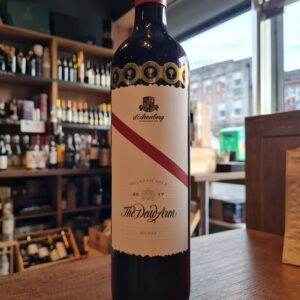 The Dead Arm is d’Arenberg’s flagship Shiraz and takes its name from a vine disease that kills off one “arm” of the plant while the other side of the vine produces remarkably intense and delicious fruit. The grapes for this bottling come from low yielding old vines on the estate which are harvested in small parcels and vinified plot by plot to give maximum control over the blending. Established in 1912, d’Arenberg is one of the McLaren Vale’s most iconic wineries which boasts some extremely old Shiraz vines planted back in the 1880s. The estate’s chief winemaker is Chester Osborn, the great-grandson of d’Arenberg’s original founder Joseph Rowe Osborn who was actually a teetotaler who used to sell his grapes on to local wineries. Powerful and ageworthy wine with firm tannins and a well-developed structure that will respond well another couple of decade or so in the cellar. Pair with hearty red meat dishes if you’d prefer to enjoy it now.
The Dead Arm is d’Arenberg’s flagship Shiraz and takes its name from a vine disease that kills off one “arm” of the plant while the other side of the vine produces remarkably intense and delicious fruit. The grapes for this bottling come from low yielding old vines on the estate which are harvested in small parcels and vinified plot by plot to give maximum control over the blending. Established in 1912, d’Arenberg is one of the McLaren Vale’s most iconic wineries which boasts some extremely old Shiraz vines planted back in the 1880s. The estate’s chief winemaker is Chester Osborn, the great-grandson of d’Arenberg’s original founder Joseph Rowe Osborn who was actually a teetotaler who used to sell his grapes on to local wineries. Powerful and ageworthy wine with firm tannins and a well-developed structure that will respond well another couple of decade or so in the cellar. Pair with hearty red meat dishes if you’d prefer to enjoy it now. -
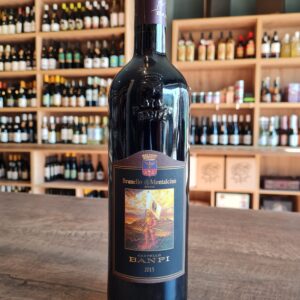 A classic from Castello Banfi in Montalcino.Elegant and balanced Brunello, characterized by a sweet, rich and complex aroma of fruit jam. A wine with great structure that is well balanced by a good softness and acidity on the final. Extremely persistent with excellent aging potential. Game, red meats or aged cheese. Or just on it's own with good company!
A classic from Castello Banfi in Montalcino.Elegant and balanced Brunello, characterized by a sweet, rich and complex aroma of fruit jam. A wine with great structure that is well balanced by a good softness and acidity on the final. Extremely persistent with excellent aging potential. Game, red meats or aged cheese. Or just on it's own with good company! -
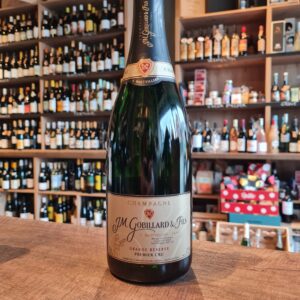 The Champagne house JM Gobillard & Fils is based in Hautvillers, a picturesque wine town in the heart of Champagne. The monk and cellar master Dom Pérignon discovered the first Champagne pearls in the Benedictine Abbey of Hautvillers around 1681 and thus made the small town the birthplace of Champagne. All three grape varieties of Champagne are carefully cultivated by hand on 30 hectares of our own vineyards - mainly in the Premier Cru vineyards of Hautvillers - under the supervision of Thierry Gobillard, oenologist and patron of the Champagne house "JM Gobillard & Fils". In addition, grapes from another 125 hectares of external vineyards are purchased from strictly controlled, quality-conscious top winegrowers. Committed to house tradition, Thierry Gobillard has full control over all of his grape requirements. With his name, he vouches for quality and uniformity, he is a guarantor of the highest perfection and a bastion in the fight against mediocrity. Thanks to the highest art of oenology, each champagne from the Champagne house "JM Gobillard & Fils" has a unique personality, so rich in expressions and appearances that you will be amazed! A votre sante! - Cheers!
The Champagne house JM Gobillard & Fils is based in Hautvillers, a picturesque wine town in the heart of Champagne. The monk and cellar master Dom Pérignon discovered the first Champagne pearls in the Benedictine Abbey of Hautvillers around 1681 and thus made the small town the birthplace of Champagne. All three grape varieties of Champagne are carefully cultivated by hand on 30 hectares of our own vineyards - mainly in the Premier Cru vineyards of Hautvillers - under the supervision of Thierry Gobillard, oenologist and patron of the Champagne house "JM Gobillard & Fils". In addition, grapes from another 125 hectares of external vineyards are purchased from strictly controlled, quality-conscious top winegrowers. Committed to house tradition, Thierry Gobillard has full control over all of his grape requirements. With his name, he vouches for quality and uniformity, he is a guarantor of the highest perfection and a bastion in the fight against mediocrity. Thanks to the highest art of oenology, each champagne from the Champagne house "JM Gobillard & Fils" has a unique personality, so rich in expressions and appearances that you will be amazed! A votre sante! - Cheers! -
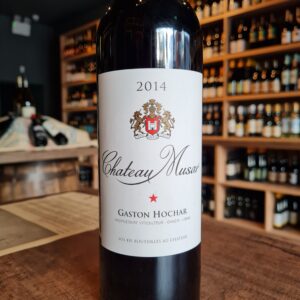 Seven years in the making, Chateau Musar Red is a blend of Cabernet Sauvignon, Carignan and Cinsault from vineyards near the Bekaa Valley villages of Aana and Kefraya on gravelly soils over limestone. Planted from the 1930s onwards, yields are low from these mature bushvines (average age: 40 years):. The varietal components are brought together two years after the harvest; the resulting blend is then placed back in cement tanks before being bottled 12 months later. After 4 years’ bottle maturation in the deep stone cellars of Chateau Musar, the finished wines are released a full seven years after the harvest. Bottled unfined and unfiltered, Chateau Musar Reds are suitable for vegans; they’re also richly-textured and likely to ‘throw a crust’. This is a common feature of most fine wines and is especially true of Musar Red vintages over a decade old. Ideally, bottles should be standing up the night before opening to allow the sediment to settle. After careful decanting (and discarding of sediment, usually in the last centimetre of the bottle) the wine should be allowed to breathe for an hour and served at 18°C with roasts, grills (especially lamb), casseroles, game, and mature cheeses. One of my favourite wines and at somewhate affordable price.
Seven years in the making, Chateau Musar Red is a blend of Cabernet Sauvignon, Carignan and Cinsault from vineyards near the Bekaa Valley villages of Aana and Kefraya on gravelly soils over limestone. Planted from the 1930s onwards, yields are low from these mature bushvines (average age: 40 years):. The varietal components are brought together two years after the harvest; the resulting blend is then placed back in cement tanks before being bottled 12 months later. After 4 years’ bottle maturation in the deep stone cellars of Chateau Musar, the finished wines are released a full seven years after the harvest. Bottled unfined and unfiltered, Chateau Musar Reds are suitable for vegans; they’re also richly-textured and likely to ‘throw a crust’. This is a common feature of most fine wines and is especially true of Musar Red vintages over a decade old. Ideally, bottles should be standing up the night before opening to allow the sediment to settle. After careful decanting (and discarding of sediment, usually in the last centimetre of the bottle) the wine should be allowed to breathe for an hour and served at 18°C with roasts, grills (especially lamb), casseroles, game, and mature cheeses. One of my favourite wines and at somewhate affordable price. -
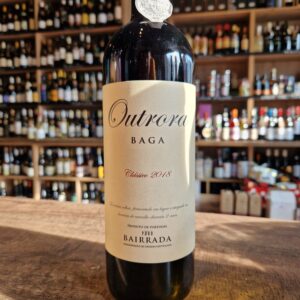 This Bairrada Classic wine is a tribute to the centenary vineyards, matriarchs of the region and witnesses of past times. The grapes are selected from 80 to 120 year old vines from our vineyard in the Cadoiços Valley. Winemaking in “lagar” with foot treading, besides being an old technique, we believe it remains the best way to obtain great wines of this variety. The two-year oak stage and subsequent bottle rest give the elegance and balance needed for a wine to be tasted for many years. An Impressive Bairrada!An Impressive Wine! Goes well with buttered Goat and Sheep Cheeses, traditional sausages (raw, boiled, or roasted), red meats
This Bairrada Classic wine is a tribute to the centenary vineyards, matriarchs of the region and witnesses of past times. The grapes are selected from 80 to 120 year old vines from our vineyard in the Cadoiços Valley. Winemaking in “lagar” with foot treading, besides being an old technique, we believe it remains the best way to obtain great wines of this variety. The two-year oak stage and subsequent bottle rest give the elegance and balance needed for a wine to be tasted for many years. An Impressive Bairrada!An Impressive Wine! Goes well with buttered Goat and Sheep Cheeses, traditional sausages (raw, boiled, or roasted), red meats


